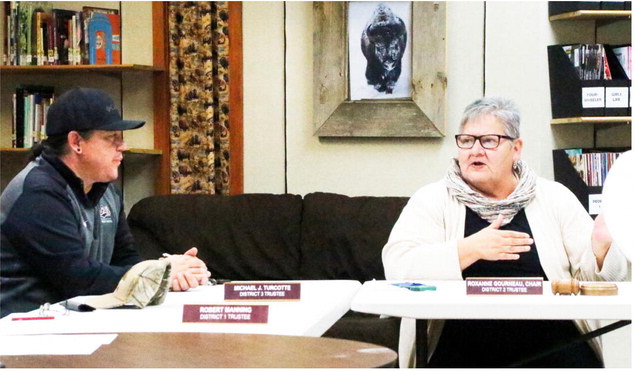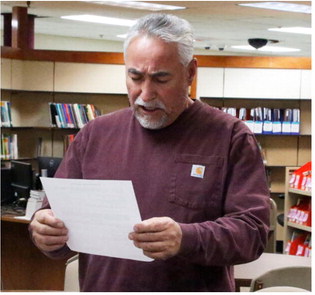Alleviating Anxiety Via Internet


How the expansion of an MSU research project is helping hundreds of Montanans access mental health care during the COVID-19 crisis
Montana Free Press
There’s plenty to occupy your mind during a pandemic. Am I going to get sick? How am I going to put food on the table? Can I pay my bills? How am I supposed to work and watch my kids at the same time? When am I going to see my friends or family again?
These are all concerns that Amber Martinsen-Blake, community health worker supervisor for Sweet Grass County, has been hearing over the past few months, and it worries her. Even prior to the state’s March 28 stay-at-home order, mental health issues associated with isolation have been identified as a significant concern in Big Timber, a town of about 1,700 people that’s more than an hour from most mental health services in Billings or Bozeman.
“We’ve had an epidemic of suicide here [in Sweet Grass County] forever. You put a pandemic on top of it and it’s a double whammy,” Martinsen- Blake said.
The expansion of a research project at Montana State University is helping hundreds of Montanans, including Big Timber residents, receive mental health care during the COVID-19 crisis.
The internet-based cognitive therapy program Thrive is a part of a public-private partnership between Seattle-based Waypoint Health Innovations and researchers at MSU. The online program is designed to help people who are dealing with depression and anxiety build coping skills. Participants watch videos, which they navigate by responding to question prompts, and click through the program from any location, on any device, making it flexible to a variety of schedules. About twothirds of Thrive use occurs outside of regular business hours, when traditional face-to-face therapy is rarely available, making the program more accessible to parents and 9-to-5 workers, Coleman said. The videos focus on specific skill areas and can be repeated multiple times.
Since 2017, the program has served more than 750 Montanans, largely in rural areas like Big Timber, through a clinical trial at MSU.
A paper published on the clinical trial found the program was effective in reducing the severity of symptoms of depression and anxiety, which correlate with risk of suicide.
The mental health concerns sparked by COVID-19 have been well documented. The United Nations, the World Health Organization and the Centers for Disease Control have said that governmental responses to the pandemic should consider mental health.
Montana, a state with suicide rates consistently among the top in the nation, also took quick action to help with mental health concerns during the pandemic. Within four days of the state’s stay-at-home order, the Montana Department of Public Health and Human Services announced on April 1 an expansion of mental health services, including telehealth services.
As a part of that expansion, Thrive was switched from a research track to widespread implementation. DPHHS awarded $25,000 to help fund the transition. Thrive programming is available free of charge to Montana clients and can be accessed at the Thrive For Montana website.
“When COVID disrupted the treatment system, and at the same time boosted people’s anxiety and depression, it was really powerful to be able to have something to offer folks they could access from their homes without worrying about how the program was going to get built,” said Matt Kuntz, executive director of the Montana chapter of the National Alliance on Mental Illness.
Mark Schure, an assistant professor at Montana State who helps oversee Thrive and was lead author on the clinical trial that found Thrive to be effective, said more than 350 people have signed up for the program since it was expanded in April. Schure said the program is particularly valuable in the current because it is internet-based and accessible to people who may be hesitant to leave their homes because of the virus.
“We’re just offering it to people who feel like it is helpful to them,” Schure said. “This is aimed for helping with depression and anxiety symptoms. Those two types of conditions have more than likely increased in the general population since COVID, with social isolation, the number of people who have lost their livelihood, face economic uncertainty, and have anxiety [about] ‘What does the future hold?’” Martinsen-Blake, who had begun helping Sweet Grass County residents enroll in the program even prior to the pandemic, said it’s particularly beneficial in a rural community far from care centers. She also said the program has helped reduce some of the stigma associated with mental health.
“It’s a nice ice-breaker to soften the view on mental health. Many of the individuals we’re working with are not ready to do therapy or psychiatry, and [Thrive is] a little less threatening,” Martinsen-Blake said. “They told me they feel less alone. The questions that Thrive asks are universal. It helps normalize their feelings.”
Brett Coleman, a co-founder of Waypoint Health, said the program’s library of videos helps make it effective. Overall, there are 300 different videos amounting to about nine hours in total. No single person will see all that video, Coleman said. Rather, individual experience is tailored by responses to in-video prompts.
Janet Lindow, a research associate professor of psychiatry at the University of Arizona who co-authored the MSU paper on Thrive’s effectiveness, said she has completed the program three or four times, and the video-centric aspect of the program helps make it effective.
Three different modules are designed to encourage development of skills that will ideally last long beyond the program.
“It’s tailored to how severe your symptoms of depression are,” Lindow said.
Elsewhere, Thrive has been implemented in several different markets across the United States, mostly in urban areas. The idea is to help patients access care when they can, Coleman said.
In Montana, the program’s accessibility to rural communities like Big Timber has proven to be helpful, Coleman said.
“It wasn’t developed with rural individuals in mind, but rural folks tend to have more barriers to care,” Coleman said. “It seems to make sense that it would have more utility in a rural area.”
John Greist, an emeritus professor at the University of Wisconsin who helped develop Thrive, said he hopes the transition to telehealth during COVID-19 will continue even after the pandemic.
“The only thing COVID does is make it more widely useful than it would be in normal times,” Greist said.


